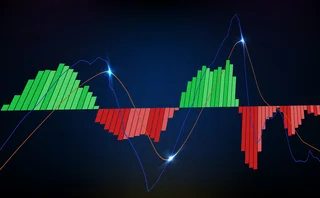
An aversion to variance
As volatility spiked in late 2008, variance swaps contributed to huge bank losses, particularly in single stocks. Some dealers have now stopped quoting single-stock variance swaps, while activity in the broader market has been scaled back. Mark Pengelly reports

Variance swaps have proven tricky beasts to risk manage. These instruments grant investors a payout equal to the difference between realised variance and a pre-agreed strike level, times the vega notional. But because variance is the square of volatility, an unpredictable trading environment can have dramatic effects on variance positions. As a consequence, bad bets on variance have led to significant losses for users in the past. Towards the end of 2008, they struck once again. After September
Only users who have a paid subscription or are part of a corporate subscription are able to print or copy content.
To access these options, along with all other subscription benefits, please contact info@risk.net or view our subscription options here: http://subscriptions.risk.net/subscribe
You are currently unable to print this content. Please contact info@risk.net to find out more.
You are currently unable to copy this content. Please contact info@risk.net to find out more.
Copyright Infopro Digital Limited. All rights reserved.
You may share this content using our article tools. Printing this content is for the sole use of the Authorised User (named subscriber), as outlined in our terms and conditions - https://www.infopro-insight.com/terms-conditions/insight-subscriptions/
If you would like to purchase additional rights please email info@risk.net
Copyright Infopro Digital Limited. All rights reserved.
You may share this content using our article tools. Copying this content is for the sole use of the Authorised User (named subscriber), as outlined in our terms and conditions - https://www.infopro-insight.com/terms-conditions/insight-subscriptions/
If you would like to purchase additional rights please email info@risk.net
More on Equity markets
The future of equity derivatives: perspectives for UK equities and dividends
Managing equity and dividend risk today requires new trading strategies and products. In a webinar convened by Risk.net and hosted by Eurex, three experts discuss what’s next for the UK and European markets.
Follow the moneyness
Barclays quants extend Bergomi’s skew stickiness ratio to all strikes
What gold's rise means for rates, equities
It has been several years since we have seen volatility in gold. An increase in gold volatility can typically be associated with a change in sentiment and investor behavior. The precious metal has surged this year on increased demand for safe haven…
Breaking the collateral silos – Navigating regulation with a strategic alternative
Emmanuel Denis, head of tri‑party services at BNP Paribas Securities Services, discusses why financial institutions must rethink old practices of collateral management and instead adopt a tri-party approach, with which equities can be managed as…
BAML and Morgan Stanley shift Indian P-notes to Europe
Tax changes trigger move out of Mauritius and Singapore
Volatility traders wrestle with digital risk of Brexit
Skew on major indexes leaps after market wakes up to risks of UK's referendum
New US tax rules could hamper ETN market, dealers warn
IRS’s forthcoming Section 871(m) rules could inadvertently capture legacy ETNs
Dealers fear death of dividend risk premia strategy
Shrinking dividend futures premium hurting investors







